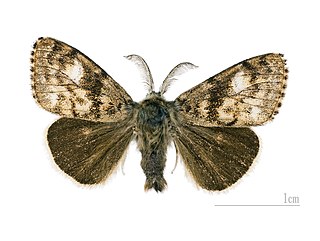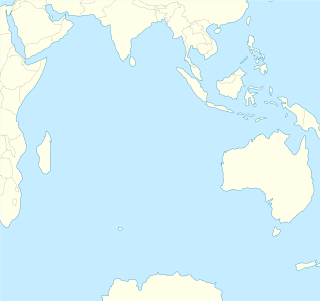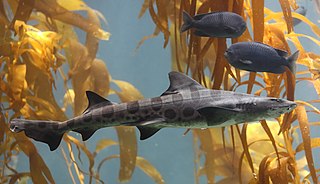
The leopard shark is a species of houndshark, in the family Triakidae. It is found along the Pacific coast of North America, from the U.S. state of Oregon to Mazatlán in Mexico. Typically measuring 1.2–1.5 m (3.9–4.9 ft) long, this slender-bodied shark is immediately identifiable by the striking pattern of black saddle-like markings and large spots over its back, from which it derives its common name. Large schools of leopard sharks are a common sight in bays and estuaries, swimming over sandy or muddy flats or rock-strewn areas near kelp beds and reefs. They are most common near the coast, in water less than 4 m (13 ft) deep.
A nomen oblitum is a technical term, used in zoological nomenclature, for a particular kind of disused scientific name.

Triakis is a genus of houndsharks in the family Triakidae. The name comes from the Greek word τρι, tri meaning "three", and the Latin word acis meaning "sharp" or "pointed", in reference to the three-pointed teeth of these sharks.

The black-banded sea krait, or Chinese sea snake, known in Japan as erabu umi hebi (ja:エラブウミヘビ), and Okinawa as the irabu, is a member of the Laticauda genus of sea snakes. It is found in most of the warm wāters of the western Pacific Ocean.
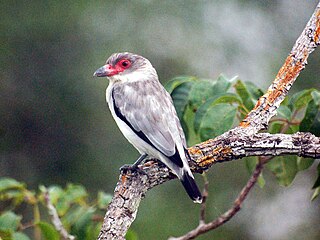
The masked tityra is a medium-sized passerine bird. It has traditionally been placed in the cotinga or the tyrant flycatcher family, but evidence strongly suggests that it is better placed in Tityridae, where now placed by SACC.

Chamaita is a genus of moths in the subfamily Arctiinae. Species are distributed throughout India, Sri Lanka, and Borneo.
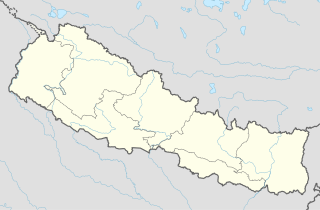
Chamaita is a town and village development committee in Ilam District in the Mechi Zone of eastern Nepal. At the time of the 1991 Nepal census, it had a population of 5,229 people living in 863 individual households.
Chamaita barnardi is a moth of the family Erebidae. It is found in Australia.
Chamaita celebensis is a moth of the family Erebidae. It is found on Sulawesi.
Chamaita fasciata is a moth of the family Erebidae. It is found on the Dampier Archipelago.
Chamaita fascioterminata is a moth of the family Erebidae. It is found in New Guinea.
Chamaita metamelaena is a moth of the family Erebidae. It is found in New Guinea.
Chamaita neuropteroides is a moth of the family Erebidae. It is found in India (Assam).
Chamaita niveata is a moth of the family Erebidae. It is found in New Guinea.
Chamaita nubifera is a moth of the family Erebidae. It is found on the Philippines.
Chamaita nympha is a moth of the family Erebidae. It is found in Sri Lanka.
The Nudariina are a subtribe of lichen moths in the family Erebidae.
Ceranemota is a genus of moths belonging to the subfamily Thyatirinae.
Ceranemota semifasciata is a moth in the family Drepanidae. It was described by Foster Hendrickson Benjamin in 1938. It is found in North America, where it has been recorded from northern California.

Phakphokthum is a rural municipality out of six rural municipality located in Ilam District of Province No. 1 of Nepal. There are a total of 10 municipalities in Ilam in which 4 are urban and 6 are rural.

